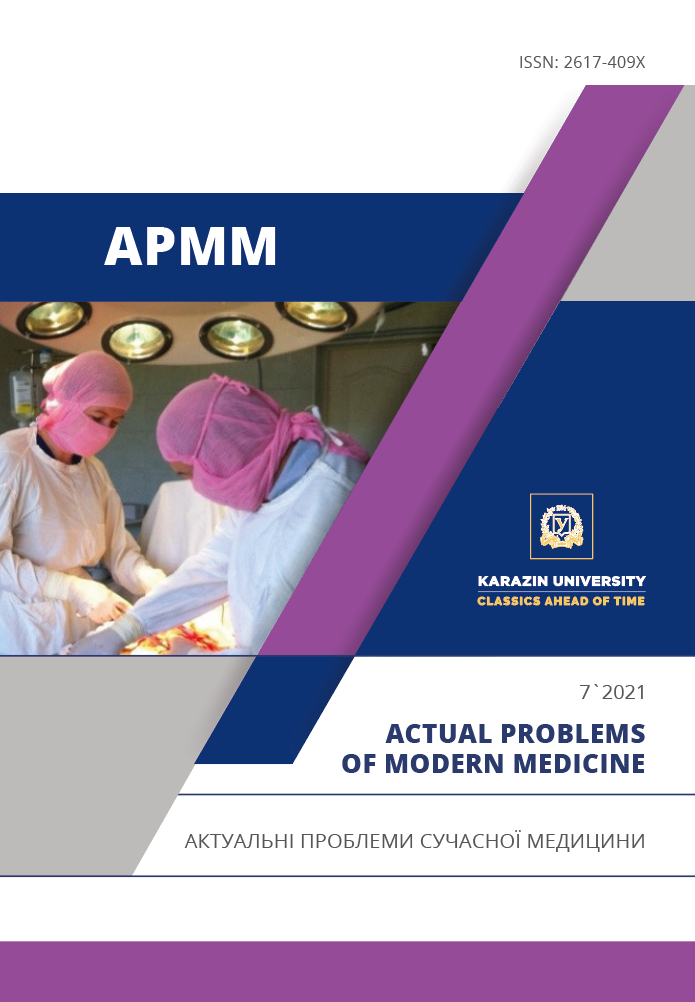Патогенетичне обгрунтування методів профілактики передчасних пологів
Анотація
Вивчення патогенезу передчасних пологів – одне з важливих завдань сучасного акушерства. Це дозволяє розробити науково-обгрунтовану програму прогнозування та профілактики цього ускладнення вагітності. Метою роботи було вивчення показників імунної системи та обміну речовин сполучної тканини у жінок з передчасними пологами. Матеріали та методи. Було обстежено 227 вагітних жінок, 190 з яких мали клінічні ознаки загрози передчасних пологів. До I групи залучено 48 жінок з загозою невиношування вагітності, що завершилась пологами у термінах від 23 до 27 тижнів. У II групі під спостереженням знаходилось 142 жінки з загрозою невиношування вагітності в термінах від 28 до 36 тижнів. До III групи увійшли 37 жінок з фізіологічним перебігом вагітності, що завершилась пологами без ускладнень у термінах 38-41 тиждень. Було проведено вивчення кількості лімфоцитів та їх субпопуляцій, вміст метаболітів сполучної тканини у крові обстежених. Результати та обговорення. У жінок I групи по відношенню до жінок III групи відмічалось вірогідне (р<0,001) зниження в крові відносного рівня CD3+-маркера Т-лімфоцитів у середньому на 23 %, що дозволяє припустити наявність імунодефіциту та розглядати як стресову реакцію організму. У жінок з передчасними пологами у термін гестації 28-36 тижнів (II група) відносний рівень у крові CD3+, навпаки, незначно, але вірогідно (р=0,014) збільшувався по відношенню до жінок з фізіологічним перебігом вагітності в середньому на 13 %. Суттєве зниження імунорегуляторного індексу у жінок I групи пов’язано з пригніченням Т-хелперної складової та підкреслює наявність імуносупресії Т-клітинного типу. Зниження індексу у жінок II групи відбувалося на користь цитотоксичних Т-лімфоцитів. Висновки. Проведена робота підтверджує думку Р. Ромеро про роль імунного «відторгнення» у ІІІ триместрі, пов’язаного з несумісністю матері та плода за системою HLA. У жінок I групи при порівнянні з жінками III групи спостерігалося більш виражене підвищення в сироватці крові вільного оксипроліну – маркеру розпаду колагену, ніж зв’язаного оксипроліну – маркеру синтезу колагену. У жінок II групи також спостерігається одночасне збільшення рівня двох фракцій оксипроліну, але більш виражене для білковозв’язаної фракції. Це дає змогу вважати, що порушення обміну основних речовин сполучної тканини призводить до руйнування колагенового матриксу шийки матки та її вкорочення. Проведені дослідження дають змогу вважати, що для профілактики недостатності обтураторної функції шийки матки у ІІ триместрі на тлі порушень метаболізму в сполучній тканині слід застосовувати серкляж або песарій. Використання прогестерону є доцільним з позицій профілактики синдрома «короткої шийки», а також можливого імуносупресорного ефекта останнього. Встановлені ознаки аутоімунних процесів потребують проведення скринінга на антифосфоліпідний синдром та призначеня, у разі його підтвердження, антикоагулянтів.
Завантаження
Посилання
Di Renzo GC, Cabero Roura L, Facchinetti F, et al. Preterm labor and birth management: Recommendations from the European Association of Perinatal Medicine. J Matern Fetal Neonatal Med. 2017;30(17):2011-2030. https://doi.org/10.1080/14767058.2017.1323860.
Lakhno IV, Korovsy SV, Actual issues of prediction and prevention of premature birth. Health Of Woman. 2020.1(147):8-13; https://doi.org/10.15574/HW.2020.147.8
Romero R, Conde-Agudelo A, Da Fonseca E, et al. Vaginal progesterone for preventing preterm birth and adverse perinatal outcomes in singleton gestations with a short cervix: a meta-analysis of individual patient data Am J Obstet Gynecol. 2018;218(2):161-180. https://doi.org/10.1016/j.ajog.2017.11.576.
Sentilhes L, Sénat MV, Ancel PY, et al. Prevention of spontaneous preterm birth: Guidelines for clinical practice from the French College of Gynaecologists and Obstetricians (CNGOF). Eur J Obstet Gynecol Reprod Biol. 2017;210:217-224. https://doi.org/10.1016/j.ejogrb.2016.12.035.
Grishchenko OV, Lakhno IV. Ovcharenko AT, Dudko VL. Venotonic drugs application basement in patients with fetoplacental insufficiensy. The Journal of V. N. Karazin Kharkiv National University, series "Medicine". 2005;705(11):71-75.
Grishchenko OV, Lakhno IV. Ovcharenko AT, Dudko VL. Glucosaminoglycans role in physiological gestation. The Journal of V. N. Karazin Kharkiv National University, series "Medicine". 2005;658(10):57-61.
Stephenson MD, McQueen D, Winter M, Kliman HJ. Luteal start vaginal micronized progesterone improves pregnancy success in women with recurrent pregnancy loss. Fertil Steril. 2017;107(3):684-690. https://doi.org/10.1016/j.fertnstert.2016.11.029.
Sperling JD, Dahlke JD, Gonzalez JM. Cerclage Use: A Review of 3 National Guidelines. Obstet Gynecol Surv. 2017;72(4): 235-241. https://doi.org/10.1097/OGX.0000000000000422.
Care A, Jackson R, O'Brien E, et al. Cervical cerclage, pessary, or vaginal progesterone in high-risk pregnant women with short cervix: a randomized feasibility study. J Matern Fetal Neonatal Med. 2019;34(1):1-9. https://doi.org/10.1080/14767058.2019.1588245.
Jarde A, Lutsiv O, Park CK, et al. Effectiveness of progesterone, cerclage and pessary for preventing preterm birth in singleton pregnancies: a systematic review and network meta-analysis. BJOG. 2017;124(8):1176-1189. https://doi.org/10.1111/1471-0528.14624.
Berghella V, Saccone G. Cervical assessment by ultrasound for preventing preterm delivery. Cochrane Database Syst Rev. 2019;9(9):CD007235. https://doi.org/10.1002/14651858.CD007235.pub4.
Rasmark Roepke E, Hellgren M, Hjertberg R, et al. Treatment efficacy for idiopathic recurrent pregnancy loss—systematic review and meta-analysis. Acta Obstet Gynecol Scand. 2018;97(8):921-941. https://doi.org/10.1111/aogs.13352




